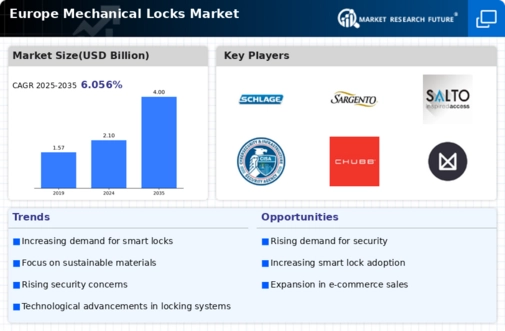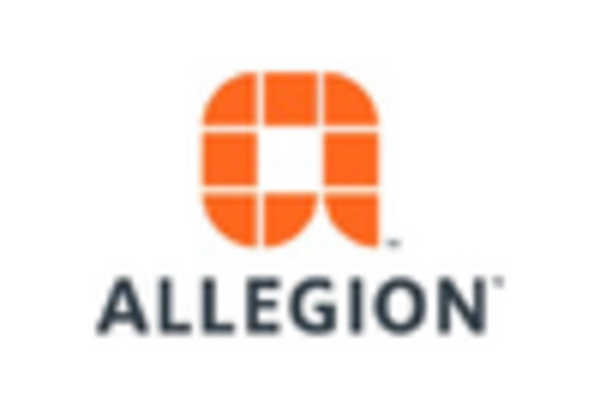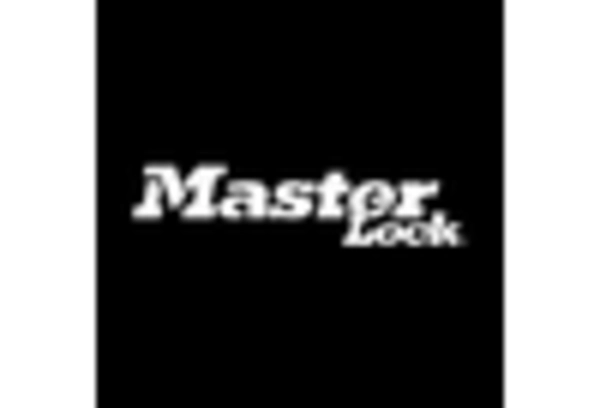Germany : Strong Demand and Innovation Drive Growth
Germany holds a dominant position in the European mechanical locks market, accounting for approximately 30% of the total market share with a value of $650.0 million. Key growth drivers include a robust construction sector, increasing security concerns, and a shift towards smart locking solutions. Government initiatives promoting safety standards and regulations further bolster demand, while significant investments in infrastructure enhance industrial development.
UK : Evolving Security Needs Shape Demand
The UK mechanical locks market is valued at $400.0 million, representing about 20% of the European market. Growth is driven by urbanization, rising crime rates, and a focus on home security. Regulatory frameworks, including the Building Regulations, emphasize safety and security, influencing consumer preferences towards high-quality locking systems. The demand for smart locks is also on the rise, reflecting changing consumer behavior.
France : Focus on Innovation and Safety
France's mechanical locks market is valued at $350.0 million, capturing around 17% of the European market. The growth is fueled by increasing investments in residential and commercial properties, alongside heightened security awareness. Government regulations, such as the French Construction Code, mandate safety standards that drive demand for reliable locking systems. The trend towards smart technology is also gaining traction among consumers.
Russia : Security Needs Drive Market Expansion
The Russian mechanical locks market is valued at $300.0 million, accounting for about 15% of the European market. Key growth drivers include urban development, rising crime rates, and a growing middle class seeking enhanced security solutions. Government initiatives aimed at improving infrastructure and safety standards are also contributing to market growth. The demand for high-security locks is particularly strong in urban areas.
Italy : Cultural Factors Influence Demand
Italy's mechanical locks market is valued at $250.0 million, representing approximately 12% of the European market. Growth is driven by a mix of traditional and modern security needs, with consumers valuing both aesthetics and functionality. Regulatory policies, including the Italian Building Code, emphasize safety, influencing purchasing decisions. The market is characterized by a strong presence of local manufacturers alongside international players.
Spain : Urbanization Fuels Market Growth
Spain's mechanical locks market is valued at $230.0 million, making up about 11% of the European market. The growth is driven by rapid urbanization, increased construction activities, and a heightened focus on security. Government regulations promoting safety standards are also influencing market dynamics. Major cities like Madrid and Barcelona are key markets, with a competitive landscape featuring both local and international brands.
Rest of Europe : Regional Variations Shape Demand
The Rest of Europe mechanical locks market is valued at $300.0 million, accounting for about 15% of the total market. This sub-region encompasses a variety of countries with differing security needs and regulatory environments. Growth drivers include urbanization, economic development, and increasing security concerns. The competitive landscape features a mix of local and international players, catering to diverse consumer preferences across various sectors.

















Leave a Comment